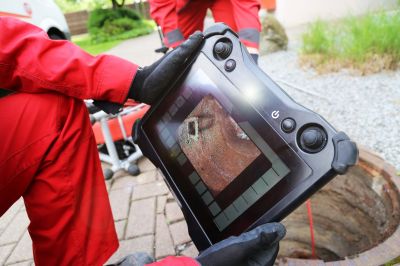Favorite Drain Pipe Relining Materials For Long-Lasting Repairs
Explore high-performance relining products that offer durability, ease of installation, and compatibility with various pipe types.
 Drain pipe relining is a method used to repair damaged or deteriorating pipes without the need for extensive excavation. This technique involves inserting a lining material into the existing pipe, which then hardens or cures to form a new, smooth pipe surface. It is a minimally invasive solution that can significantly reduce repair time and disruption to property. The process is suitable for various pipe materials and sizes, making it versatile for residential, commercial, and municipal applications.
Drain pipe relining is a method used to repair damaged or deteriorating pipes without the need for extensive excavation. This technique involves inserting a lining material into the existing pipe, which then hardens or cures to form a new, smooth pipe surface. It is a minimally invasive solution that can significantly reduce repair time and disruption to property. The process is suitable for various pipe materials and sizes, making it versatile for residential, commercial, and municipal applications.
Top Overall Option
Flexible Resin Pipe Liner Kit
A versatile and comprehensive solution, the flexible resin pipe liner kit includes all necessary components for a typical relining project. It features a durable, resin-saturated liner that conforms to pipe contours, along with curing accessories such as UV or heat sources. This kit is suitable for a wide range of pipe sizes and provides a straightforward approach for professional or DIY use, emphasizing ease of handling and reliable results.
Types of Products For Drain Pipe Relinings
Cured-in-Place Pipe (CIPP) Liners
Pre-impregnated liners that are inserted into the pipe and cured in place, forming a new pipe within the existing pipe structure.
Flexible Pipe Sleeves
Flexible, resin-coated sleeves that can be inserted into damaged pipes to restore integrity and flow.
Spray-Lined Pipe Coatings
Spray-applied coatings that adhere to pipe interiors, providing corrosion resistance and smooth surfaces.
Folded Pipe Liners
Folded liners that expand once inserted, suitable for pipes with irregular shapes or difficult access.
UV-Curable Liners
Linings cured using ultraviolet light, offering quick curing times and durable results.
Chemical Curing Liners
Linings that cure through chemical reactions, suitable for various pipe materials and conditions.
Inflatable Pipe Bladders
Inflatable devices used to shape and support liners during installation, ensuring proper fit and curing.
Pipe Repair Epoxy Coatings
Epoxy-based coatings applied directly to pipe interiors to seal cracks and restore surface smoothness.
Resin Injection Systems
Systems designed to inject resin into cracks or voids within pipes for targeted repairs.
Pre-Formed Pipe Segments
Rigid segments that can be inserted into damaged sections for quick patching and reinforcement.
Self-Expanding Pipe Liners
Liners that expand once inserted, ensuring tight fit and sealing within the existing pipe.
Pipe Bursting and Relining Combos
Integrated systems that combine pipe bursting with relining to replace and repair pipes simultaneously.
Popular Choices
Widely used for their adaptability and effectiveness in various pipe repair scenarios.
Commonly selected for their ease of installation and durable finish.
Popular for quick curing times and strong, seamless repairs.
Chosen for their ability to adapt to various pipe shapes and sizes.
Frequently used to ensure proper liner expansion and fit during installation.
Valued for sealing cracks and restoring pipe surface smoothness.
Popular for providing corrosion resistance and quick application.
Often used for targeted crack repairs within existing pipes.
Selected for patching specific damaged sections efficiently.
Preferred for their ease of installation and tight fit within pipes.
The relining process typically begins with inspection using CCTV cameras to assess the extent of damage and determine the appropriate lining approach. Once the assessment is complete, the lining material—often a resin-saturated fabric or flexible pipe—is inserted into the damaged pipe. Once in place, it is cured using heat, ultraviolet light, or chemical processes, creating a seamless, durable pipe within the existing pipe. This method helps restore flow capacity and prevents further deterioration, extending the lifespan of the piping system.
Choosing the right products for drain pipe relining involves understanding the different types of liners, curing methods, and compatibility with existing pipe materials. Factors such as pipe diameter, length of damage, and accessibility influence the selection of relining products. Proper installation is crucial to ensure a long-lasting repair, which is why selecting quality materials and reliable tools is essential. Whether for small residential repairs or large-scale municipal projects, the right relining products can facilitate efficient and effective pipe restoration.
Overall, drain pipe relining offers a less disruptive alternative to traditional pipe replacement. It provides a way to address pipe issues with minimal excavation, reducing costs and environmental impact. When selecting relining products, understanding the variety of options available can help ensure that the chosen solution fits the specific needs of each project, leading to more successful and durable repairs.
Key Buying Considerations
- Compatibility with existing pipe material and diameter
- Extent and type of damage or deterioration
- Type of curing method suitable for the application (UV, heat, chemical)
- Ease of installation, especially for DIY projects
- Durability and resistance to corrosion or chemicals
- Flexibility of the liner to conform to pipe contours
- Length and coverage capacity of the liner or kit
- Availability of accessories like inflatable supports or curing equipment
- Time required for curing and final setting
- Cost-effectiveness relative to project scope
- Manufacturer reputation and product reviews
- Environmental conditions during installation (temperature, humidity)
- Ease of handling and storage of relining materials
- Compatibility with pipe access points and existing infrastructure
- Long-term performance expectations and maintenance requirements
